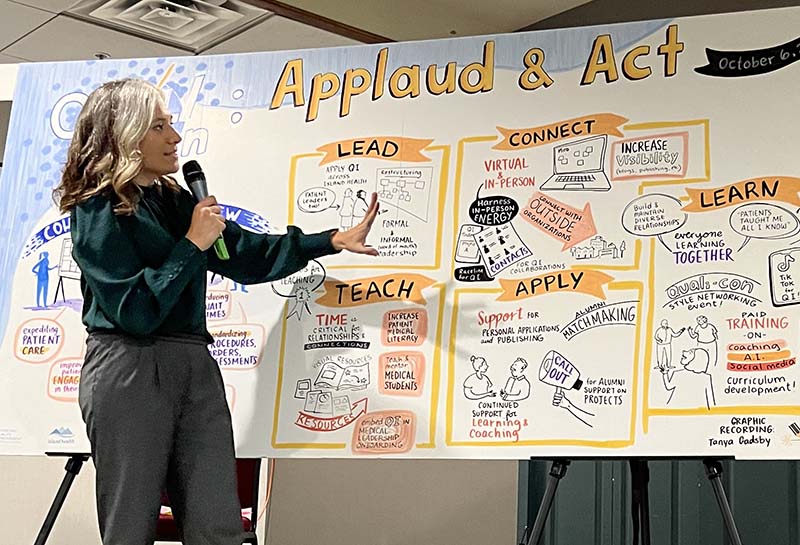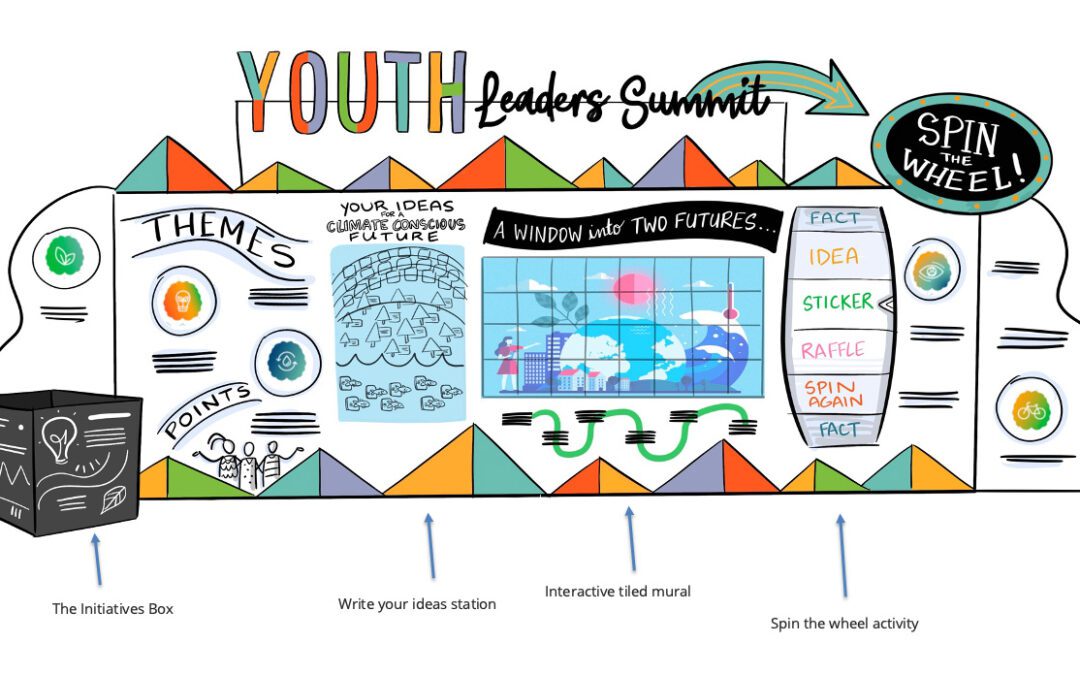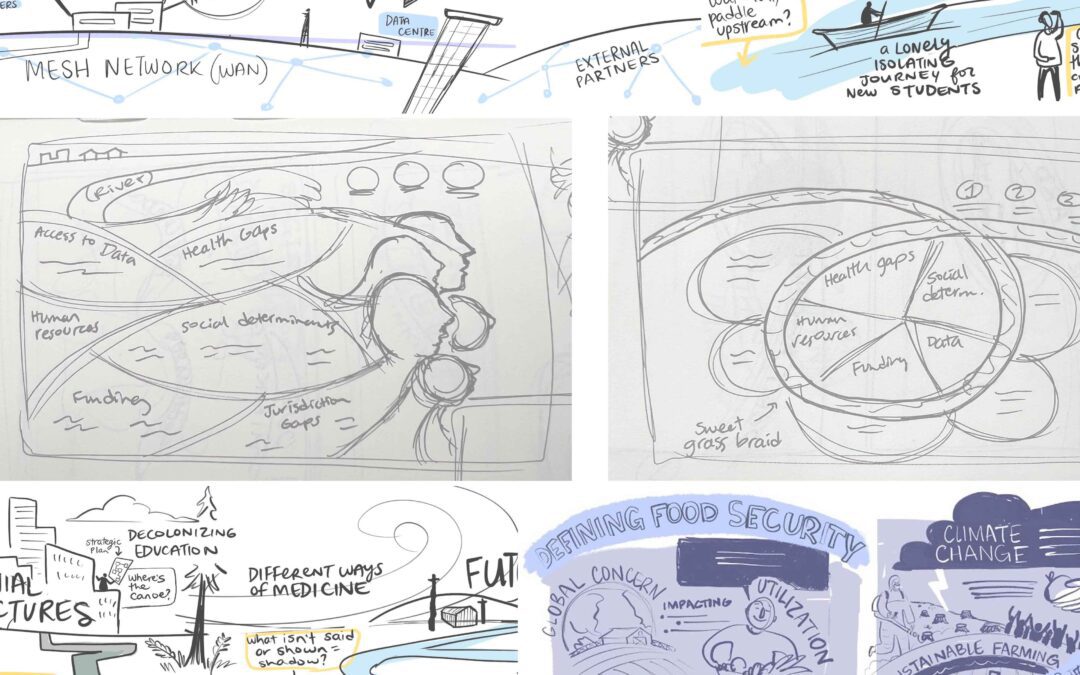UPDATE Jan. 2021: Interested in tips for using digital graphic recording in online meetings? Check out our latest post: Ultimate Guide to Using Graphic Recording in Online Meetings!
We’re getting more requests for digital graphic recording, and it’s quickly becoming a preferred format for some of our clients. Digital graphic recording is flexible, offers unique engagement opportunities, and helps inform breakout group discussions. However, it’s important to consider the benefits and considerations of this format to determine what will work best for your conference!
What is Digital Graphic Recording?
Using a tablet computer (such as an iPad, Wacom Cintiq, or Surface Pro), the graphic recorder illustrates the presentations and discussions in real time. An HDMI or VGA cable connects the tablet computer the projection system and the graphic is projected for the audience to see (in real time or after the graphic is complete).
The preparation for a digital graphic recording is the same as paper-based graphic recording – the differences between the two formats are mainly in how the audience interacts with the graphics.
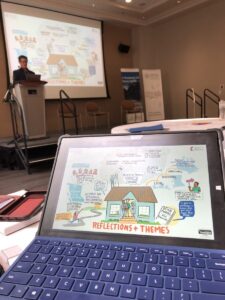
Digital graphic recording at a home care conference
Benefits of Digital Graphic Recording
✓ Audience Sees the Details
The graphic recording is projected and the audience can see all the details of the illustration in real time. This isn’t possible with graphic recording on paper (especially with large audiences), unless a live camera operation is set up to follow along with the graphic recorder — a pricey option! Projecting the digital graphic recording allows people to follow along with the discussion and see their words illustrated in real time.
✓ Less Space Requirements
Digital graphic recording requires very little space in a conference. Graphic recording on paper is usually 4ft x 7ft in size, and at full day conferences wall space is required for hanging completed graphics (can be up to 4-5 sheets a day). On the other hand, digital graphic recording only requires a table and chair for the graphic recorder. The completed graphics are uploaded to a shared file or conference app for participants to access as soon as the graphics are complete.
✓ Virtual Options
Digital graphic recording can be done in-person (connected into the projection system) or the graphic recorder can connect virtually via webinar. If you have people virtually connecting into the conference, they can view the digital graphic recording as it’s created, or it can be live streamed for an online audience to watch.
✓ Access to the Graphics
The digital graphic recordings are uploaded to a shared file or conference app as soon as they’re completed. The audience has access immediately on their laptops/mobile devices. At busy conferences, people may not have the chance to come over and review graphic recordings created on paper, so it’s ideal if they have access to the graphics on their devices.
✓ Informing Breakout Groups
During break out group discussions, the digital graphic recordings can be referenced on laptopsices to help inform participants. This is particularly useful if keynotes or presentations earlier in the day contained information that participants might want to reference in order to deepen their group work.
✓ Social Media Ready
Because the images are polished and high-resolution, they’re ready for immediate posting on social media. At high-profile conferences, this is a great option for boosting engagement online, and so conference attendees have a record of the conference they can immediately share with colleagues.
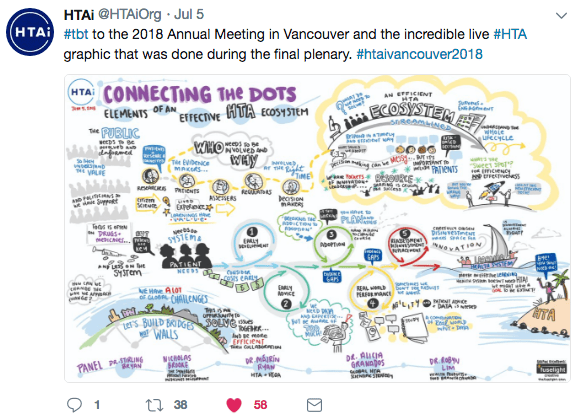
Digital graphic recording shared on Twitter
✓ Plenary Walkthrough of Digital Graphic Recordings
When the digital graphic recording is complete, the facilitator or MC can walk through the graphics on the projection screen, and the audience can also follow along on their devices. (An engaging MC or facilitator is best for leading the walkthrough) This is an effective way of reflecting on the topics discussed and for catching any missing content or errors.
✓ Feedback Gathering
Since the audience can see all the details of the graphics as they’re being drawn, people are more likely to catch areas where we need to make corrections or additions. This is an important part of the audience taking ownership of the graphics, and for ensuring accuracy.
✓ Engagement Factor
Scrap the PowerPoints! Digital graphic recording is more engaging and is a great addition to plenary discussions, Q & As, and panel discussions… anywhere there isn’t a PowerPoint.
✓ Hard-copy Prints
Printed copies of the graphics can be provided to the audience on site — a tangible takeaway for people who prefer having a physical record.
✓ Whiteboard Video
A “whiteboard style video” can be created by screen recording the digital graphic recording as it’s illustrated. The video can be presented as an impressive conference summary, posted on social media, or presented as a “recap” at future workshops and conferences.
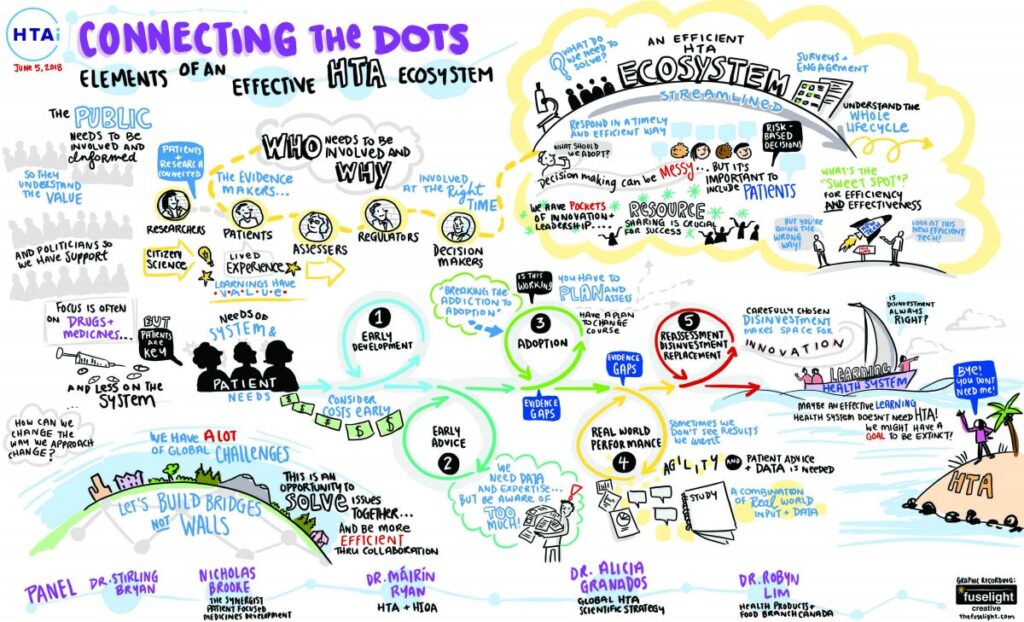
Things to Consider with Digital Graphic Recording
→ No Tactile Experience
The tactile experience of a physical graphic recording cannot be underestimated. Created on large paper using markers, pastels, and at an impressive scale, paper-based graphic recording has a tremendous impact on engagement in the room. The graphic is a physical “artifact” the audience has witnessed being built, and something they can walk up to, touch, and take snapshots. Depending on your audience, people may connect better to a physical graphic recording rather than a digital one.
→ Limited Interactivity
The audience has limited interactivity with digital graphic recordings. With large paper graphic recording, the audience provides thoughts or questions on sticky notes directly on the graphics (this article outlines different ways of making graphic recording interactive). Other interactive options for paper graphic recording include a Group Build, a Knowledge Wall, or Visual Templates in breakout groups. These are important interactive components that digital graphic recording cannot yet replicate.
→ Different Engagement Impact
Even if the audience can’t see all the details of what’s captured on a paper graphic recording, the very presence of the graphic recorder intently listening to the presentations has an impact on audience engagement. Digital graphic recording does not typically show the person listening behind the illustration, as the graphic recorder is often “hidden away” at the A/V booth!
→ No Physical Gallery Walk
Paper graphic recording is illustrated on 4ft x 7ft sheets, and each graphic recording is displayed in a gallery walk where people can physically move through and view the images. This provides a natural place to congregate and discuss the conference’s topics with fellow attendees. Some audiences are more likely to review physical graphic recordings rather than digital, so it’s important to know what will work best for your conference.
→ Technical Glitches
Sometimes glitches happen, even if a rehearsal of the projection system is done in advance. There can be connectivity issues, a lag in the drawing time, or software might crash on the tablet. It’s important to have a back-up option, such as a second tablet or computer, or even a sketchbook to graphic record in if needed.
Digital graphic recording and large paper graphic recording have different benefits – it’s important to understand what will work best for your audience and how you want to use the graphics in your conference. We’re always happy to share ideas about what will work best for your conference, so get in touch if you’re unsure!
